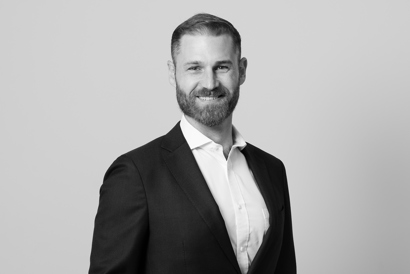As part of our launch of The Equity Project, Burford is honored to be joined by a group of outstanding lawyers and legal industry leaders who as Equity Project Champions are helping us bring attention to the need to provide economic incentives to help close the gender gap in law.
In September 2018, we interviewed some of our Equity Project Champions. We will share excerpts from their interviews and comments in a series of five posts.
We’re grateful to these and all of our Equity Project Champions for their invaluable support as well as their willingness to share their perspectives in their limited time.
Carolyn Lamm, Partner, White & Case
The Honorable Katherine B. Forrest, Partner, Cravath, Swaine & Moore
Dr. Nadine Herrmann, Managing Partner and Chair, EU and German Competition Law Practice, Quinn Emanuel
Nicole D. Galli, Managing Partner, Law Offices of N.D. Galli; Founder and President, Women Owned Law
Sue Prevezer QC, Chair, International Trial Practice, Quinn Emanuel
Roberta D. Liebenberg, Senior Partner, Fine, Kaplan and Black
Tara Lee, Co-Chair, Transnational Litigation Group, Quinn Emanuel
Alan Bryan, Senior Associate General Counsel, Walmart
Fortunately, the gender gap in law is shrinking—but frustratingly slowly. In your view, what strategies and tactics have been most and least successful in shrinking that gap? What do you think could have the most immediate impact on closing the gender gap?
Roberta Liebenberg: Law firms must implement meaningful structural changes. For example, firms should reformulate how partner compensation decisions are made by reducing the emphasis on origination credit. All the members of a team who have enhanced client relationships should be
rewarded, not just an individual partner who may have a historical relationship with the client but did not bring in
a particular matter or even work on it.
Law firms should also set numerical goals for increased numbers of women to be named as equity partners and included on important firm committees, and hold leaders accountable if targets are not met.
Nadine Herrmann: Although not a quick fix, I believe it is essential to have female role models in law firms who can serve as mentors to aspiring female associates.
Law firms react to demands from their clients. If clients demanded gender diversity on their case teams, that would make a big and immediate difference at firms. But it would also benefit clients to have diverse teams, because diversity breeds innovation. In litigation, women in leading roles can offer different perspectives in many cases.
Nicole Galli: The Mansfield rule has been in a place for a year, and there’s been some success in terms of there being some changes in the numbers. Since I’m not currently in a large firm environment, I don’t know if they are just changes on paper or if they’re real, but something like that is certainly worth a shot. Ultimately, though, in order to shrink the gender gap, you have to get women to have sizable books of business, and how you do that is not an easy question.
NAWL publicized a study on legal marketing and asked whether being in a law firm was a benefit or not for women. What they found was that although men benefit—they are included in team RFP responses, they are given other opportunities to pitch for business—women don’t. Women were out there trying to get the business on their own. As anybody knows, it is a lot harder to get work from new clients than existing clients. And it’s easier when you can come in presenting a team with the weight of the firm behind you than it is if you are just out there trying to do it by yourself. That’s why supporting women who are in a majority women-owned firm and/or women in other firms to be able to bring in business, and substantial business, could be a game changer.
Alan Bryan: Succession planning is one way clients can work toward closing the gender gap. Purchasers of legal services can affect everything from collectables to credit allocation to standing in the firm—and they should determine who will own the business relationship.
Clients, be proactive. Assign the high-profile matter to a woman lawyer. Contact the managing partner to compliment her work. Be bold enough to say that you expect credit to go to the woman lawyer who owns your relationship. Serve as a mentor, guide, referrer, sponsor and champion of women lawyers.
I have spoken often about how a host of daily actions can create a more inclusive environment. There is science behind this. Dr. Paola Cecchi Dimeglio of Harvard uses behavioral science, data analytics, AI, and “nudging” techniques to identify and remove bias within and across business and legal institutions. Her studies show law firms how to attract, retain and promote diverse talent and leaders more effectively by designing and implementing inclusive “nudges” at critical decision points.
These can have an immediate impact and, in the aggregate, will help further close the gender gap.
Equity Project Roundtable Q&A
Part I • Part II • Part III • Part IV
To read the full roundtable, download the Autumn 2018 Burford Quarterly.




